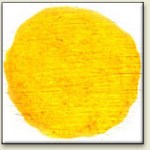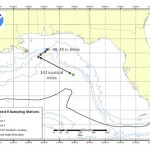
She clasps the crag with crooked hands
Close to the sun in lonely lands
Writing is in someways a lonely land, or lonely may not be the precise word I'm looking for. There's a kind of necessary solitude, the need for a clear space. At my home office, this usually means me telling the kids, "Go yell at each other somewhere else so that I can think."
You take your quiet places where you find them. I'm currently in my hotel room in Amman, Jordan, where its just me, the laptop, and some really good coffee. But it's really an internal quiet some times. I write in noisy bars too…
I started Speakeasy Science in late January on my author website. I'd finished my book on the invention of modern forensic toxicology in 1920s New York City - The Poisoner's Handbook - but I'd developed an addiction to writing about chemistry and culture.
It was my first heady experience of working solely for myself. I've been a staff journalist at five newspapers, a freelance writer for a list of newspapers, magazines and websites, and a book author. I've worked with brilliant editors and indifferent ones, publishers who were generous, publishers who were penny counters.
My blog, right down…
A couple days ago I received this note:
"There was an article in the Huffington Post not long ago about an extreme worst case scenario with the oil spill - that a giant methane bubble bursts through the sea floor, ignites, causes a huge supersonic tsunami that would wipe out all of Florida, followed by a vaporization tsunami.
I've heard this described as "disaster porn", and certainly, the scenario smacks of it. But, there have been extreme natural disasters in the past, and not being a geologist, I can't help but feel some alarm at this, as I'm currently a resident of Tampa. I have…
As a dedicated chemistry nut - I mean, of course, enthusiast - I've recently wondered if my favorite science could explain the existence of zombies.
And after mulling it over - helped along by the suggestion of Scibling Scicurious that a Zombie Day would be a good idea and also by a number of cocktails from the home speakeasy, I believe I've come up with a very reasonable theory.
1. The poisonous element arsenic (As) is famed for its ability to make a dead person look, well, undead.
2. Why? Arsenic helps preserve soft tissues, partly by interfering with the ability of bacteria…
The title of this post comes from a description coined by a California neurologist who, in 1982, began investigating a bizarre disease outbreak: patients with bent and twisted bodies, faces stiffened to the point that some were drooling uncontrollably, even in the summer heat resembling bodies frozen to rigidity.
As Dr. William Langston investigated further he discovered all six of these living statues had used a new form of synthetic heroin, new to the Bay Area that July. Alarmed, Langston called a press conference to warn of bad drugs on the streets.. But he - along with state and…
The name Phar Lap comes from an Asian word for lightning; a sky flash. A passing dazzle of light, a spark in the night.
And so he was, the big copper racehorse, born in New Zealand, trained in Australia, whose dazzling speed made him one of those unexpected beacons of hope during the Great Depression and who, according to a report published in an international chemistry journal in April, was killed by a massive dose of arsenic.
Of course, no one who follows race horse history could be entirely surprised by that finding. For one thing, it built on preliminary results from 2006. But from the…
During the 1970s, international aid agencies came up with a brilliant plan to stem a plague of water-borne illnesses in the Asian country of Bangladesh. They would underwrite the installation of wells in disease-troubled villages, tapping into the cleaner ground water below.
They would use simple, relatively inexpensive tube wells, place thousands of these over-sized drinking straws into the shallow aquifers. And these straws - millions of them - would suck up the cleaner, microorganism free water in healthy abundance.
At first, it seemed to work like a blessing. Infant mortality…
This is a story about 13.4 million promotional drinking glasses. Really cute colorful glasses produced for McDonalds in a tie-in for the current hit movie, Shrek Forever After. All of said glasses recalled by said McDonalds (in both the U.S. and Canada) after it turned out that the pigments used to create those images contained the toxic metal cadmium.
Oops, you might say. Because cadmium has been known as a bad actor for close on 200 years. Almost since it was discovered, in fact. So before we return to the poisoned Shrek glasses, let's spend a little time on that history - and…
Recently, I wrote a cranky little post about NOAA's behavior regarding the Gulf of Mexico. The agency's approach seemed to me to be timid and deferential at a time when I wanted a strong voice and and steady sense of purpose.
What had set me off was the agency's reluctance to use the word "plume" in describing the underwater mists of oil drifting away from the BP disaster site. Why not, I asked, call a plume a plume?
To my surprise, I almost immediately got a call from NOAA. For some reason, people at the agency didn't agree with my analyses. I thought they were being wusses. They thought…
I was sorry to see the deadline pass on The Poisoner's Handbook audio book giveaway because I received so many smart and thoughtful ideas for writing about chemistry in our culture. And I found it really difficult to pick just five winners - so first I'd like to say thanks to everyone who wrote in for the contest.
If I selected your idea for a free audiobook of The Poisoner's Handbook, you will have received a direct e-mail from me by now.
As a writer I'm drawn to specific ideas, one in which I can clearly see the story. So expect to see future posts based on these excellent suggestions:…
I'm having a Tony Hayward moment - the oil spill is disrupting my plans. I wonder if I can interest a television network in letting me talk about how much I want my life back.
Okay, had to get that out of my system. Sorry. Kind of a cheap shot.
Because I really just want to apologize for running late on The Poisoner's Handbook Giveaway announcement. There are 31 terrific entries and I had planned to notify winners yesterday.
Then I went chasing the question of oil plume semantics instead. Still would like to write more on that subject. But first, getting my life back. I'll be sending out…
I was on the phone this afternoon with a friend at what I'll describe as a highly respected national-type newspaper, and we almost simultaneously broke into complaint about the National Oceanic and Atmospheric Administration (NOAA).
What set us off was NOAA's grudging admission of the day, that despite angry earlier denials, there were indeed swathes of oil-saturated water coiling for miles, under the surface of the Gulf, emanating away from the site of the BP pipe break.
As The New York Times noted: "the tests confirmed that some toxic compounds that would normally be expected to…
(Just a note: The giveaway period for the audiobook of The Poisoner's Handbook has ended. If your comment is not published, it's too late to be considered for a free copy. But still glad to hear your ideas! Winners to be notified on Wednesday).
One of the most interesting - and I think important - comment threads on this blog has concerned risks posed by the gas methane, blamed (along with BP) for the devastating oil spill in April and still seeping into the water from the broken drill pipe.
"We don't know the composition of the crude oil as it is leaving the well head. This crude is…
The second post I wrote for this blog was partly to explain the title:
"Why Speakeasy Science? Well, first because I just wrote a book, The Poisoner's Handbook, which is set in Jazz-Age New York, which was home to some 30,000 speakeasies. Also I like the historical feel of the name. I've always been interested in the intersection of science and culture and I find moments in history, where those two forces pull at each other, to be wonderfully illuminating. Speakeasy itself appeals to my sense of word play - I like the idea of speaking easily about science. And finally - some science…
So, at a Sunday news briefing, British Petroleum's CEO, Tony Hayward, announced that there are no underwater plumes of oil resulting from the April accident at the company's Deepwater Horizon rig in the Gulf of Mexico.
Why? Well, first BP's testing hasn't found any such evidence. And second, Hayward reminds us that, you know, oil floats. Or if we didn't get that: "Oil has a specific gravity that's about half that of water. It wants to get to the surface because of the difference in specific gravity."
Let's give the man this: there is definitely oil floating on the surface…
In a recent discussion on this blog, an interesting thread appeared: the idea that BP's heavy use of chemical dispersants to break up the Gulf oil spill was as much damage cover up as damage control.
Here are a few examples:
My suspicion is that the main reason they used these dispersants was to hide the oil from view.... Anything that will keep the oil out of site below the surface allows them a certain measure of plausible deniability regarding their knowledge of the spills true magnitude.
I think there is a big effort on the part of BP to minimize the aesthetic and…
The latest news from the Gulf of Mexico offers both relief (the "top kill" approach to ending the oil spill may be working) and dismay (the amount of oil pouring into the water is now thought to be closer to 20,000 barrels a day rather than the 5,000 barrels that BP has insisted on for weeks.)
In other words - at worst case - the U.S. Geological Survey estimates that the spill amount may be closer to 39 million gallons of oil so far, rather than the 11 million previously suspected. Now, I've spent the last week or so focusing on the chemical dispersants used to break down the oil,…
In the past week, a lot of writers - and, yes, that includes me - have focused on the chemical dispersants being sprayed into the Gulf of Mexico to help manage the ever-expanding oil spill from BP's deepwater drilling rig.
For instance, I recently pointed out while dispersants do help break apart a slick into smaller and more biodegradable fragments, dispersed oil is a great deal more poisonous than crude oil. Further, that post, A Lethal Concentration, generated a great discussion, and one that taught me a lot.
I hadn't considered that the thriving bacterial colonies of warm…
So, yesterday, a friend of mine suggested that BP should stand for Barren Planet rather than British Petroleum.
And today The New York Times reported that despite all the evidence that BP's favorite dispersant (yes, Corexit) is more poisonous and less effective than others on the market, and despite the fact that the EPA order the company to find an alternative by, um, yesterday, the company was still dumping the same old, same old chemical compounds into the Gulf of Mexico.
Despite the fact that there are 11 other approved dispersants on the EPA list.
Talk about warning…
The standard toxicity test for chemical compounds is called the LD50. LD stands for Lethal Dose and 50 indicates 50 percent. In other words, LD50 means the lowest dose at which a material kills half of the test subjects.
The results are usually given in milligrams of compound per kilograms of body weight. Many of these tests are conducted on laboratory rats. To give you a few rat results: the LD50 of table sugar (sucrose) is 29,700 mg/kg. For table salt (sodium chloride, NaCl) it's 3,000 mg/kg. Really poisonous substances, though, measure in the single digits: Sodium cyanide (…





